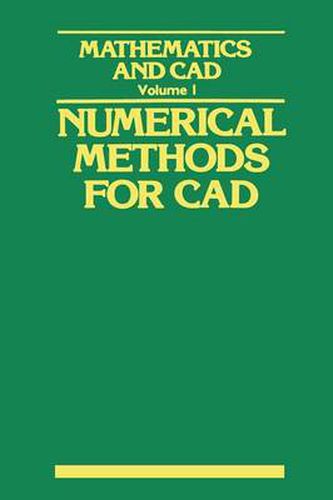Readings Newsletter
Become a Readings Member to make your shopping experience even easier.
Sign in or sign up for free!
You’re not far away from qualifying for FREE standard shipping within Australia
You’ve qualified for FREE standard shipping within Australia
The cart is loading…






This title is printed to order. This book may have been self-published. If so, we cannot guarantee the quality of the content. In the main most books will have gone through the editing process however some may not. We therefore suggest that you be aware of this before ordering this book. If in doubt check either the author or publisher’s details as we are unable to accept any returns unless they are faulty. Please contact us if you have any questions.
The use of computer-aided design (CAD) systems always involves the introduction of mathematical concepts. It is important, therefore, for any systems designer to have a good grasp of the mathematical bases used in CAD. The choice of mathematical models in a system also has an effect on the overall quality, although this effect may not always be visible to the final user. Depending on whether Bezier or B-spline functions are used for curves and surfaces, for example, the final user even if not a com puter scientist will notice a difference. If, for example, one of the control points is modified by the user, in a Bezier-type representation, the curve or surface will tend to be modified overall, but in a B-spline representation, the curve or surface will tend to be modified close to the point, and there only. More possibly harmful, however, is the effect of the mathematical model which has a number of properties invisible and unknown to the final user. In every case a model must be chosen with, it is hoped, the most appropriate characteristics and limits for the task in hand.
$9.00 standard shipping within Australia
FREE standard shipping within Australia for orders over $100.00
Express & International shipping calculated at checkout
This title is printed to order. This book may have been self-published. If so, we cannot guarantee the quality of the content. In the main most books will have gone through the editing process however some may not. We therefore suggest that you be aware of this before ordering this book. If in doubt check either the author or publisher’s details as we are unable to accept any returns unless they are faulty. Please contact us if you have any questions.
The use of computer-aided design (CAD) systems always involves the introduction of mathematical concepts. It is important, therefore, for any systems designer to have a good grasp of the mathematical bases used in CAD. The choice of mathematical models in a system also has an effect on the overall quality, although this effect may not always be visible to the final user. Depending on whether Bezier or B-spline functions are used for curves and surfaces, for example, the final user even if not a com puter scientist will notice a difference. If, for example, one of the control points is modified by the user, in a Bezier-type representation, the curve or surface will tend to be modified overall, but in a B-spline representation, the curve or surface will tend to be modified close to the point, and there only. More possibly harmful, however, is the effect of the mathematical model which has a number of properties invisible and unknown to the final user. In every case a model must be chosen with, it is hoped, the most appropriate characteristics and limits for the task in hand.